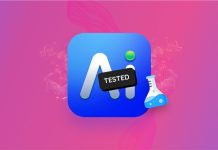A few weeks ago Readdle, the company behind apps like PDF Expert for iPad, released an app called Remarks, a highly flexible note taking app that stores your notes as PDF files.
One feature that didn’t make it into version 1.0 of the application was the ability to synchronise folders from Dropbox or WebDAV servers with the app. Last week Readdle notified us that an update was available, adding this functionality and a few other tweaks. So let’s take a look at this app.
The first thing you’re greeted with is the notes view, which contains a short manual explaining the usage of the app and a document with change notes on version 1.1.
Here you can see all the notes that are saved on the device, add notes and folders, search for notes, sort notes by name and date and switch between your most recently used notes and the network storage.
Folders can not only be named but also color coded, which is very helpful if you have different areas of responsibility for example.
The app has a built-in palm recognition (for left handed and right handed users), which is very useful when writing with a capacitive stylus. The feature works very well, resulting in very few unwanted dots and lines on the page, and these can easily and precisely be removed with the eraser tool.
Apart from free hand writing, the user can also add written text in a large variety of fonts, shapes, arrows and even pictures. All these options are accessible through unobtrusive pop-over menus.
Each note (and thus PDF file) can have multiple pages with different layouts and paper styles.
The app also offers a wide range of PDF annotation options, which should be more than enough for most tasks in school. It doesn’t offer as many ways to annotate PDFs like Readdle’s PDF Expert for iPad or GoodReader but it’s not supposed to.
The user can even rearrange and add pages to existing PDFs (files that weren’t created by the user need to be unprotected).
If a file created in Remarks is sent to another Remarks user, he or she can have complete control over the file, including changes to everything down to the paper style, making this app great for collaboration.
In terms of networking features, it offers synchronisation with Dropbox, Google Docs and generic WebDAV servers. The user simply has to choose a folder, say in the Dropbox main directory, and tap the sync button to set-up a two-way synchronisation with the folder on the device. These synced folders don’t show up among the regular notes that were created inside the application, which might be seen as a disadvantage, but in day to day use it keeps everything nice and orderly, especially because moving notes from the app to the online storage is very easy.
The application also creates a folder called ‘Remarks’ on every cloud storage service it’s connected with, which allows easy sharing and backup of notes.
The network component of the application leaves some things to be desired though. While it’s logical not to overcrowd the notes view with synced folders, it would be nice to be able to tell the app to sync a local folder or note with the ‘Remarks’ folder the app created, if only for backup purposes. Another drawback is the fact that the app will only display PDF files from network locations. This may be less of an oversight, and more of an artificial limitation to differentiate the app from PDF Expert for iPad, which can display many different files types (like .jpg, .png, .txt, etc.). The ability to simply show and sync different files types — even if they’re not editable — would increase the usefulness of Remarks to the level of an app like Evernote.
Another annoyance is the fact that multitouch gestures have to be disabled to make full use of the palm recognition feature when taking hand-written notes. These system-wide gestures make switching between apps a breeze, which is incredibly useful when doing research with the iPad. The bad thing about this is that Readdle can’t do anything about it, as it’s probably not possible to override this OS functionality in the app itself.
The bottom line:
Remarks is great for taking all kinds of notes, organising them and syncing them to the cloud services you use. The PDF annotation features are straightforward and — in most cases — work better than in Readdle’s PDF Expert for iPad, because the annotation UI is more compact and “gets out of the way”. Sharing and export to other applications on the iPad and with friends and colleagues is very easy.
The user interface is beautifully crafted, very compact and understandable, never distracting the user from his or her work.
The fact that the app will not even display other common file types slightly mars the application’s overall usefulness, because this seems like an unnecessary, artificial limitation, to differentiate it from the company’s other offerings.
Apart from the few shortcomings mentioned in this review, there really is little to wish for. The integration of a few more web services for content retrieval and storage (like the relatively new service Dropmark) would elevate this app to a worthwhile contender for apps like Evernote.
All in all Remarks has earned itself a permanent place on my homescreen and the only question that remains for me is: Why in the world would Readdle only release this great piece of productivity software during my last semester of university?






